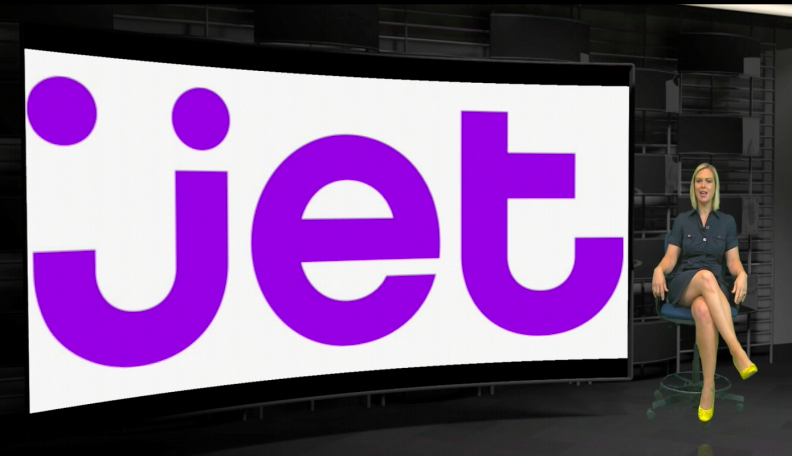Are you an Amazon loyalist? I buy everything, literally all our toilet paper, dish soap, diapers, you name it on amazon. Why? Because prices are usually good and with Prime I don’t have to drag the kids out to buy the goods. Also, I like that I get an even bigger discount when I subscribe to monthly product deliveries. As grateful as I am, if another retailer offered the same services for even cheaper prices we would switch.
That’s what Jet.com is banking on. The newest, biggest e-retailer is offering cheaper prices, than almost any other retailer, for a membership price of $49.99 a year. Jet.com, based in Hoboken, New Jersey, is even offer products for sale that they don’t have in stock. What’s even more nuts, they will buy them for you at a higher price from another retailer and send them directly to you, all because they’re determine to build a bigger client base than Amazon.
More than just about any other current startup, Jet seems reminiscent of the dot-com boom era, when e-commerce companies assumed giant losses before breaking into the black.
The company is absorbing steep losses on many orders filled as part of a trial run that began in March, largely because Jet hasn’t signed up enough partner merchants or opened enough warehouses to directly sell much of the merchandise shown on its website.
When a Jet customer buys items that aren’t in its inventory or available from partner merchants, a Jet employee buys the items from another website and has them shipped directly to the customer. That is expensive for Jet because the company often pays high shipping costs plus any difference between its advertised price and the amount charged by the outside website.
For example, The Wall Street Journal recently bought 22 items from Jet. Twelve were shipped to the Journal by retailers such as Wal-Mart Stores Inc., J.C. Penney Co. and Nordstrom Inc., according to sales receipts.
Jet’s prices for the same 12 items added up to $275.55, an average discount of about 11% from the prices Jet paid for those items on other retailers’ websites. Jet’s total cost, which also includes estimated shipping and taxes, was $518.46.
As a result, Jet had an overall loss of $242.91 on the 12 items. Mr. Lore says the loss is unusually large, partly because the items’ cost was low relative to shipping charges.
By 2020, Jet expects to have 15 million paying customers, which would generate about $750 million based on the current $49.99-a-year membership cost. Membership fees will be Jet’s sole source of profits, since it says it will relentlessly undercut rivals on product prices and offer free shipping on orders of more than $35 and free returns. Overhead expenses alone are expected to climb to about $150 million a year.
Mr. Lore says the concierge service is a “stopgap” that will dwindle as Jet signs up more partner merchants. More than 2,000 have told Jet they want to sell on its website, and hundreds are already doing so. Eventually, the concierge service will be used only for obscure items.
Jet also wants to stock products from partner merchants in its warehouses along with everyday items such as toothpaste, which typically make no money but will help draw people to Jet’s website, where they are likely to buy other merchandise.
Those moves would help the company reduce shipping costs by increasing the average number of items per shipment, according to Jet.
Some retailers say they were unaware that Jet is pitching their products, often by discounting them below the retailer’s own price. “If they’re unhappy with it, we’ll just get [the product] somewhere else,” Mr. Lore says.
Adam Fischer, vice president of Internet sales at Wüsthof-Trident of America Inc., says he was unhappy to learn that Jet discounted some of its products because that can cheapen customer perceptions of Wüsthof’s high-end cutlery and undercut authorized dealers. Wüsthof is a unit of Wüsthof Dreizackwerk KG.
Mr. Lore responds that Jet will remove any brand’s products from its website if asked—and abide by the brand’s minimum selling prices.
Building scale
Why is Jet willing to alienate brands and take a financial hit on purchases made using outside websites? The answer says a lot about the formula for trying to strike it rich in the frenzied world of technology startups.
Investors are flush with cash and want to plow it into fledgling businesses with big, brash ideas that seem promising and could be wildly profitable if the company survives long enough to go public or be acquired.
Jet is trying to pull off one of the most improbable scenarios of all: lure millions of customers away from Amazon, which had raised less than $10 million in funding before it went public in 1997. Amazon, of Seattle, now is worth about $225 billion.
Mr. Lore says Jet needs to spend aggressively to reach massive scale, at which point the company will start to turn a profit. That includes as much as $300 million over five years for the outside merchandise-buying program, which Jet calls a “concierge” service, to help attract new members while Jet adds inventory and forges more partnerships with retailers who want to sell products on its site.
As of Sunday, Jet had 4.5 million products, says Mr. Lore, who expects the number to hit 10 million by the end of this week. At its launch, Jet will fulfill about one-third of customer orders itself, with another third handled by partner merchants and the rest by Jet’s concierge service. Jet had about 100,000 trial members as of Sunday, Mr. Lore says.
we hope you’ll read the whole story at WSJ
Don’t forget to sign up for the newsletter to get the inside scoop!
Follow us on Instagram, twitter and Facebook to join the revolution!






